Study on theDriveability DuringEngineStart Processfor A P2Hybrid Vehicle
Wang Junhua,Sun Qichun,Cao Jian
(1.Tongji University,Shanghai 201804;2.China FAW Corporation Limited Ramp;D Center,Changchun 130011)
Study on theDriveability DuringEngineStart Processfor A P2Hybrid Vehicle
Wang Junhua1,2,Sun Qichun1,2,Cao Jian2
(1.Tongji University,Shanghai 201804;2.China FAW Corporation Limited Ramp;D Center,Changchun 130011)
Perfect performance of economy and emissions make hybrid powertrain used more widely,but frequent engine start may affect vehicle’s driveability.In order to obtain how to improve hybrid vehicle’s driveability,Audi A6 Hybrid which is equipped with a P2 powertrain with two engine start modes:conventional start with a 12 V starter and hybrid start with a high-voltage motor,is evaluated under several driving situations with frequently-used criteria.Test results show Audi A6 Hybrid can gain perfect driveability in all engine start situations.Avoiding to start engine frequently in some special situations,suitable choice of engine start modes,compensating driver’s request torque by down-shifting gear or increasing the traction motor torque,and maneuver sequences of K0 clutch are all helpful to obtain perfect driveability for Audi A6 Hybrid.
Enginestart,Driveability,P2powertrain,Conventional start,Hybrid start
1 Introduction
With the standards of economy and emissions more and more critical,hybrid powertrain is often used to reach those goals.For a hybrid vehicle,mode change between pure electric driving and engine driving is common to obtain wonderful performance of economy and emissions,which can also affect vehicle’s driveability at the same time[1~2].When the vehicle is standstill or running at a constant velocity,the vibrations caused by engine start may make the driver feel uncomfortable.On the other hand,when the vehicle is accelerating,the response delay caused by engine start cannot fulfil the driver’s demand of quick acceleration[3].Thus,it’s important to study the engine startprocess forimproving the vehicle’s driveability.
Some conclusions about driveability during engine start were found in some papers.Colvin et al[4]investigated the challenges of engine start for a P2 Hybrid system,and improved driveability through inhibition of shifting during engine start and a triple section ramp algorithm for filtering the commanded S/A torque during tip-in.Kim Sangjoon et al[5]proposed two methods to conduct clutch slip of EV/HEV mode change,and obtained an optimal transient control strategy for perfect driveability and powertrain stability,which is realized by employing clutch slipping strategy through either a closed loop control or an open loop control based on the comparison between transmission input speed and engine idle speed reference.
The researches mentioned above were accomplished through simulation,which may have a big difference in comparison with the real tests in consideration of the accuracy of the simulation for transient state.The main objective of this study is to analyze how Audi A6 Hybrid improve the driveability during engine start process.According to the restrictions of the powertrain components,vehicle configuration and driver’s demand,engine start situations are recognised and tested.Restrictions of engine start,choice of engine start modes,and transient control are analyzed from the test results to find the objective.
2 VehicleDescription
2.1 Powertrain Configuration
The tested Audi A6 Hybrid is a 2012 hybrid version,which is equipped with a typical P2 powertrain shown in figure 1.There are two driving sources for the vehicle:a turbocharged engine and a PM(Permanent Magnet)motor.A disconnect clutch named K0 clutch is between the two driving components,which enables the engine or the motor to propel the vehicle respectively through an automatic transmission with 8 speed ratios.The K0 clutch,the PM motor,and the automatic transmission are integrated together,which compose a dedicated hybrid transmission named 8P70 from ZF[6].In addition,a conventional 12 V starter is still equipped for engine start under some circumstances.Main parameters of powertrain components are shown in Table 1.
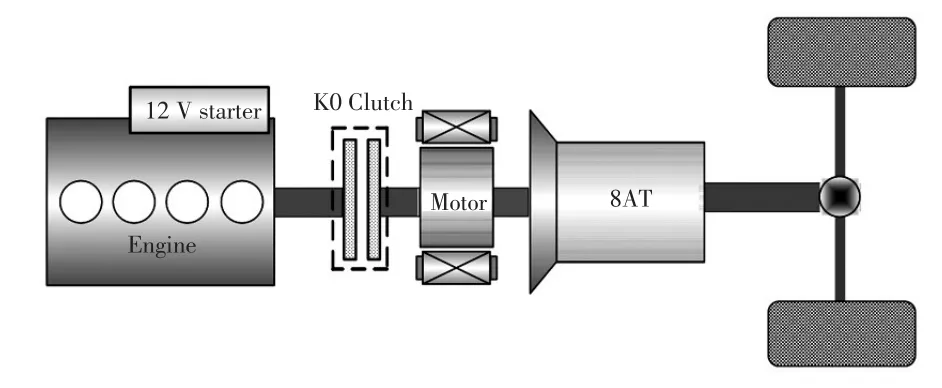
Figure 1.Powertrain configuration of Audi A6 Hybrid
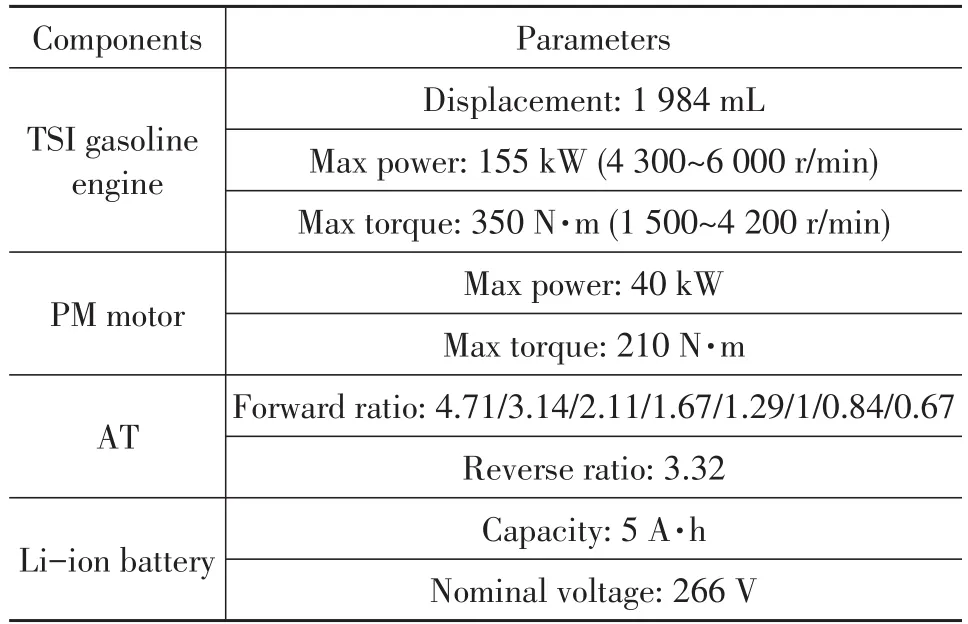
Table1.Main parametersof powertrain components
2.2 EngineStart Modes
For a P2 hybrid vehicle,four engine start modes are often used,namely:conventional start,hybrid start 1-slipping start,hybrid start 2-pluse start,and inertia start[7].When designing the engine start modes,ability of the TM(Traction Motor)motor,restriction of space and class of the vehicle are factors to be considered.For Audi A6 Hybrid,conventional start and hybrid start 1-slipping start are applied.
2.2.1 Conventional start
Conventional start is referred to engine start by a 12 V starter,which is similar to the engine start process of vehicles equipped with start-stop system.In order to prevent accessories working from voltage drop caused by high-power requirement for engine start,a dedicated AGM battery with larger capacity is equipped.
Conventional start process can be divided into three sequences:dragging start,speed synchronization and K0 close,which can be seen in Figure 2.Considering ability of 12 V starter,engine speed can be dragged up to 200 r/min approximately,and then engine injects fuel and fires.At the same time,K0 clutch accomplishes the sequence of oil filling.When engine sends signal of engine running,which means the sequence of dragging start has finished,engine torque decreases to the target value for speed synchronization.Until the difference between engine speed and TM speed is less than 100 r/min approximately,sequence of K0 close begins with slipping control.When the K0 clutch is closed completely,the engine start process is accomplished.

Figure 2.Conventional start process
2.2.2 Hybrid start
Here,Hybrid start is referred to slipping start,which is accomplished through the traction motor.With bigger capacity,traction motor can easily drag engine to a higher speed to fire,which brings less vibrations caused by resonance oscillations.
Hybrid startprocesscan be divided into four sequences:K0 oil filling, slipping start, speed synchronization,and K0 close,which are shown in Figure 3.This start mode depends on the slipping of K0 clutch,so the first sequence is K0 oil filling.The transmission is equipped with an electric oil pump and a mechanical oil pump.Considering the low ability of the electric oil pump,traction motor always runs to help establishing suitable oil pressure for K0 clutch working.After the oil pressure is enough,K0 clutch is slipping to drag engine to a high speed to fire,which is usually greater than 800 r/min.Sequences of speed synchronization and K0 close are similar to the process of conventional start.
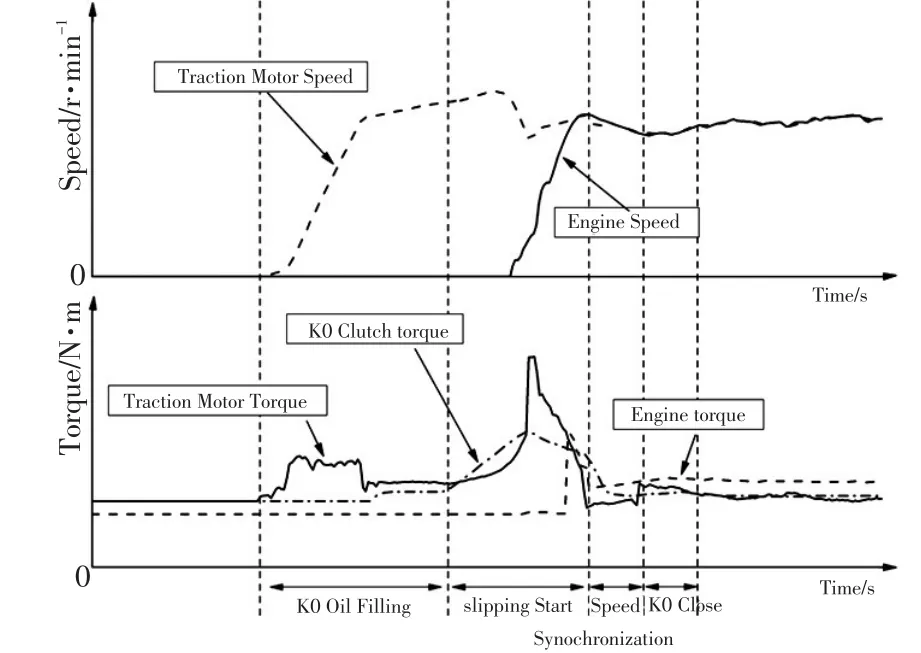
Figure 3.Hybrid start process
3 Driveability Evaluation Criteria
Driveability during engine start process is defined by vibrations and fulfilment of driver’s request[8].But what we focus on is different in consideration of driving situations.We care more vibrations rather than driver’s request fulfilment in the standstill or constant-velocity running situations,while it is contrary when the driver desires to accelerate.Thus,driveability evaluation criteria are different according to the driving situations.Here,standstill and constant-velocity running situations are evaluated by jerk of vehicle for the sake of comfort,while acceleration situations are evaluated byQCaconsidering fulfilment of the driver’s demand.
3.1 Jerk
In engine start process,oscillations which driver can feel often deliver from engine mounting and drivetrain.The former is caused by resonance,especially in low-speed firing situations,and the latter is caused by imperfect control of K0 clutch.Here,Jerk is used to evaluate such oscillations,which definition is the change rate of the acceleration and shown in equation 1.

For the moment,the quantitative index for jerk is different for each country.In China,when the absolute value is less than 17.64 m/s3,we consider the vibration is acceptable[9].In this study,driveability during engine start process isevaluated bythemaximumabsolutevalue of jerk.
3.2 QCa
For conventional vehicles,a response delay will occur when the accelerator is pushed,which is caused by engine characteristics.When it comes to the hybrid vehicles equipped with low-power traction motor,the phenomenon may be worse off in electric propelling mode,which is mainly caused by provision of torque for engine start and much longer engine response delay.
QCabased on the acceleration is used to analyze the driveability,which definition is shown in equation 2.Figure 4 reflects the relation between ΔAandamax.ΔAis the surface area between the actual and the ideal acceleration, which indicates the whole lack of acceleration,andamaxstands for the maximum acceleration during the process[3].Considering the manipulation time of the driver which must be controlled under 0.3 seconds,we choose the time when the accelerator positon reaches to 90 percent of the target position as the beginning time and set the time as zero.

If the value ofQCais less than 2,we generally consider the vehicle gain perfect driveability.
4 Test Design
4.1 DataAcquisition
To analyze driveability during engine start process,some essential signals of powertrain from CAN and acceleration signal from sensor are acquired.
CAN topology of Audi A6 Hybrid is similar to the petrol version,only with Hybrid CAN added to the CAN network shown in figure 5,which is responsible for the communication among EMS(Engine Management System),MCU(Motor Control Unit),TCU(Transmission Control Unit),and BMS(Battery Management System).
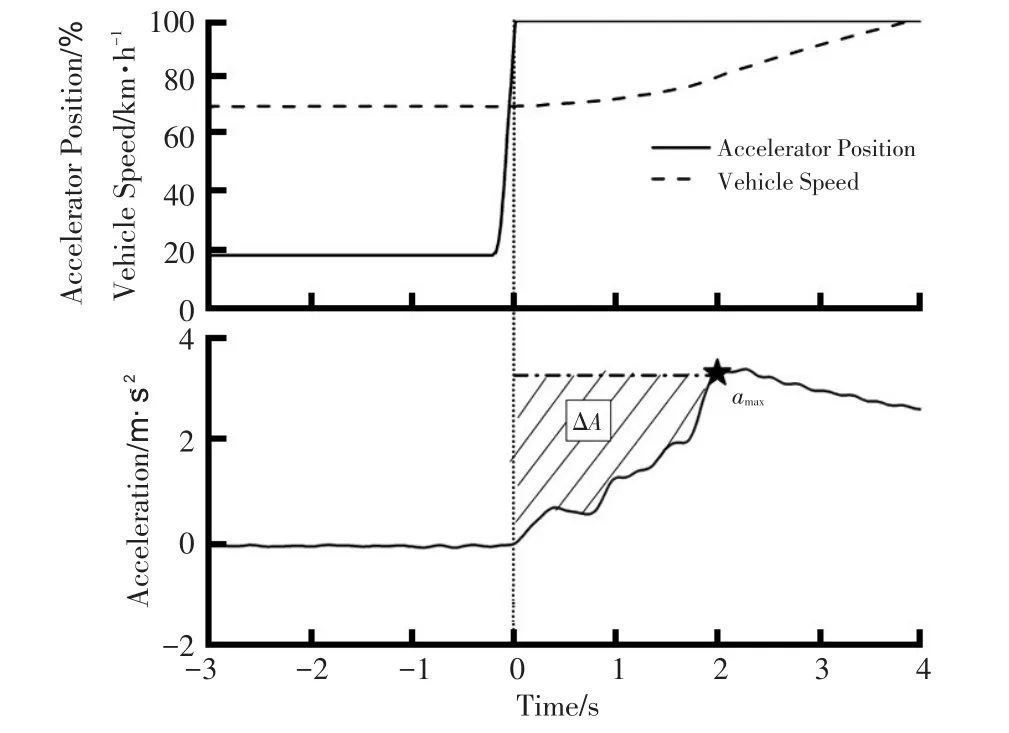
Figure 4.Driveability evaluation criteria
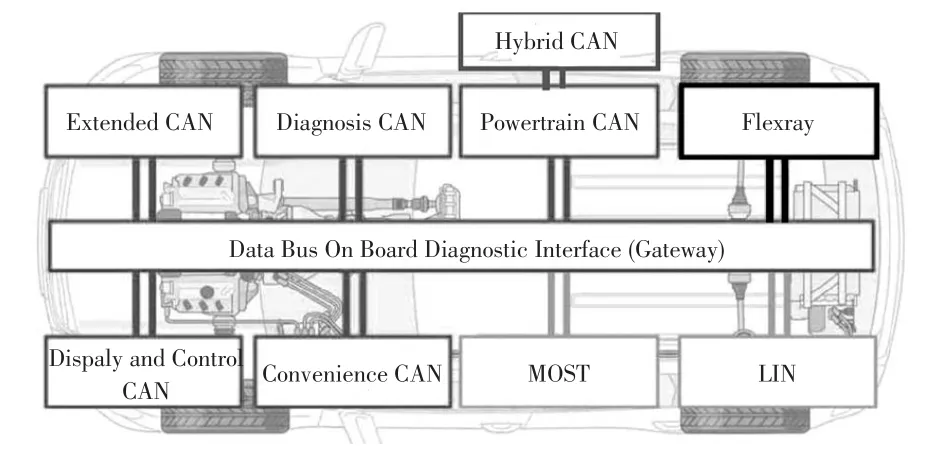
Figure 5.CAN topology of Audi A6 Hybrid
CAN signals needed include:engine speed,engine torque,TM speed,TM torque,K0 clutch status,K0 clutch torque,current gear,Li-ion battery SOC(State of Charge),velocity,accelerator position,shift lever position.All the signals mentioned above can be derived from powertrain CAN or Hybrid CAN,and data are acquired from CAN wires connecting to BMS for convenience shown in figure 6.

Figure 6.Connectors of BMS
In order to reflect the driver’s feeling abou t vibration more truly,the sensor of acceleration is fixed on the driver’s seat track[10~11].The sensor of acceleration used is FA1101-A1 from MEAS France,whose range is-5gto 5gand accuracyis2percent.Acquisitionfrequencyissetas100Hz.
Data synchronization is a problem to be solved if the test signals are from different measuring systems,so we transfer the acceleration from analog signal to CAN signal through a tool converting A/D to CAN named CANSAS from IMC Dataworks.All the signals are logged by CANalyzer from Vector.
4.2 Test Cases
Driver’s demand,restrictions of components,mode definition,and the ambient temperature are factors deciding engine start or not.Considering those factors,different engine start situations are distinguished:
a. Engine start for driver’s demand:more traction power with deep accelerator position;
b. Engine start for restrictions of components:low SOC;
c. Engine start for mode definition:changing to Sport mode;
d. Engine start for ambient temperature:engine warming up for emission requirements.
On the basis of engine start situations and the difference between evaluation criteria,test cases are set and divided into two categories:standstill/constantvelocity and acceleration,which are shown in Table 2 and Table 3 respectively.
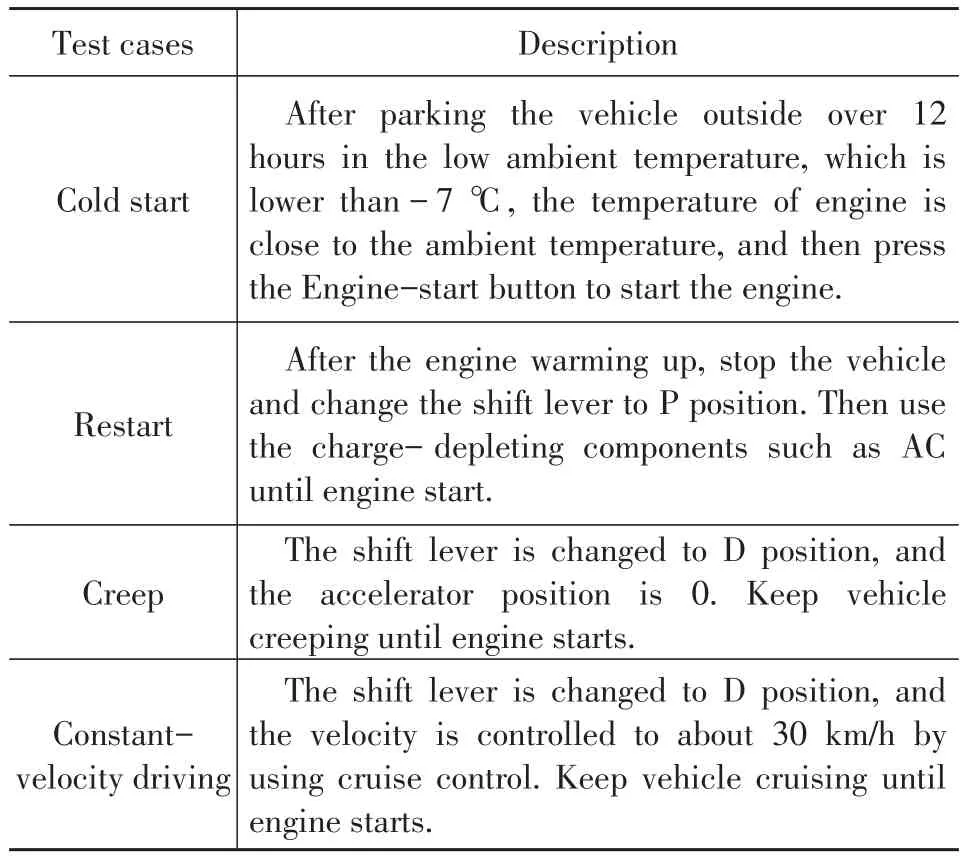
Table2.Test casesfor standstill/constant-velocity
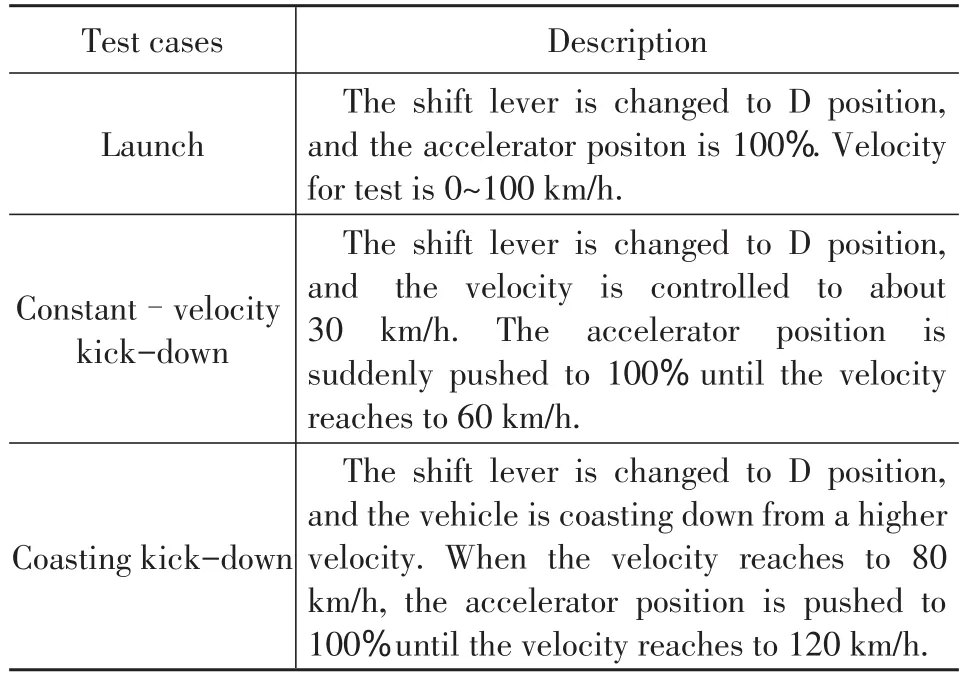
Table3.Test casesfor acceleration
5 Test Resultsand Analysis
All the test cases are implemented in the test field of FAW in Changchun,and the results prove the vehicle with perfect driveability during engine start process,which can be concluded from Table 4 and Table 5.

Table 4.Driveability results for standstill or constantvelocity

Table5.Driveability resultsfor acceleration
Restrictions of engine start,choice of engine start modes and the transient control can all affect vehicle’s driveability,which are also analyzed in the following.
5.1 Restrictionsof EngineStart
As mentioned above,there are so many restrictions of engine start.Here,we only focus on the restrictions which can affect vehicle’s driveability.
5.1.1 Engine start during sustained creep
Through the tests,we find that SOC interval of creepcharging is from 34.4%to 38.4%,which means engine propels vehicle and charges the Li-ion battery if the SOC is reduced to 34.4%,and the pure electric driving is available when the SOC rises to 38.4%.As we know,creepcharging with low load is inefficient for the powertrain,which can explain the narrow SOC interval of creepcharging.
Although engine start during creeping obtains good driveability in view of the evaluation criteria,the velocity fluctuations make the driver uncomfortable,which is caused by engine speed overshoot and the difference between the target creep velocities for the two propelling sources.Test results reveal the running time is 120 seconds for pure electric creep and 110 seconds for creepcharging approximately,which means engine will alternate start and stop frequently for sustained creep situations.
Figure 7 shows the sustained creep process of Audi A6 Hybrid,from which we can clearly see that the SOC interval of creep-charging is enlarging gradually with the engine start times increase,which can avoid frequent engine start-stop during sustained creep.The strategy for the enlargement of SOC interval is still unclear for there are no obvious regulations,but what we are sure is that a control module is existing to recognise sustained creep and adjust the restriction of engine start for avoidance of frequent engine start.
5.1.2 Engine start during changing to Sport mode
Sport mode is designed for aggressive driving,which is activated by changing shift lever to S position.As we know,a slightly increase of thrust torque and faster response time will enhance sporty performance.In order to avoid engine start during acceleration weakening sporty performance,engine will start immediately regardless of the driving situations when the driver changes mode to Sport.
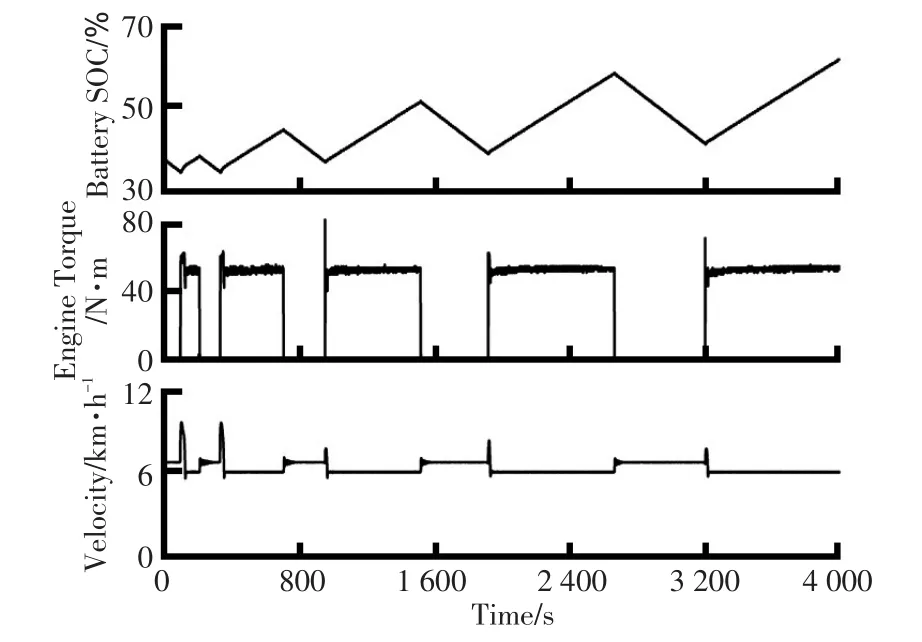
Figure 7.Engine start during sustained creep
Figure 8 shows the process of creep drive away in Sport mode.After the vehicle running for a long time,which means there is no engine start requirement for warming up,the vehicle is standstill with shift lever in S position by pushing the brake pedal.When the driver pushes off the brake pedal,the engine starts immediately.As we see in the figure,the velocity is zero and SOC is 44.8%during the engine start process,which means there are no driver’s demand and restrictions of component causing engine start.The only explaination is to avoid lack of acceleration caused by engine start,for the driver desires sporty performance by changing to Sport mode.Even the vehicle has already been in Sport mode,there is still no engine start if the brake pedal is pushed down which means no driving demand,and that may be consideration of fuel consumption.
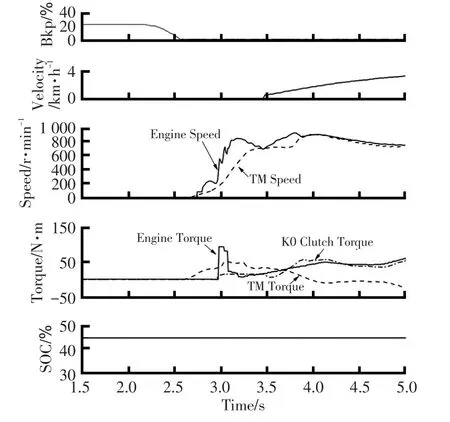
Figure 8.Creep drive away in Sport mode
5.2 Choiceof EngineStart Modes
As described above,Audi A6 Hybrid has two engine start modes:conventional start and hybrid start.Conventional start can fulfil driver’s demands for no extra traction motor power consumed,while hybrid start brings more quiet and comfortable feel[12].
Table 6 shows relation between engine start modes and driving cases.When the vehicle is standstill or running at a constant velocity,hybrid start is used for the purpose of quiet and comfort start.When the vehicle is accelerating,conventional start is used for fulfilment of driver’s demand.We also find both the engine start modes are used in the constant-velocity driving cases,which may have relation with driving power.In figure 9,we can conclude conventional start is used when the driving power is under 6 kW or above an uncertain value,and hybrid start is the choice between the two values.

Table 6.Relation between engine start modes and driving cases
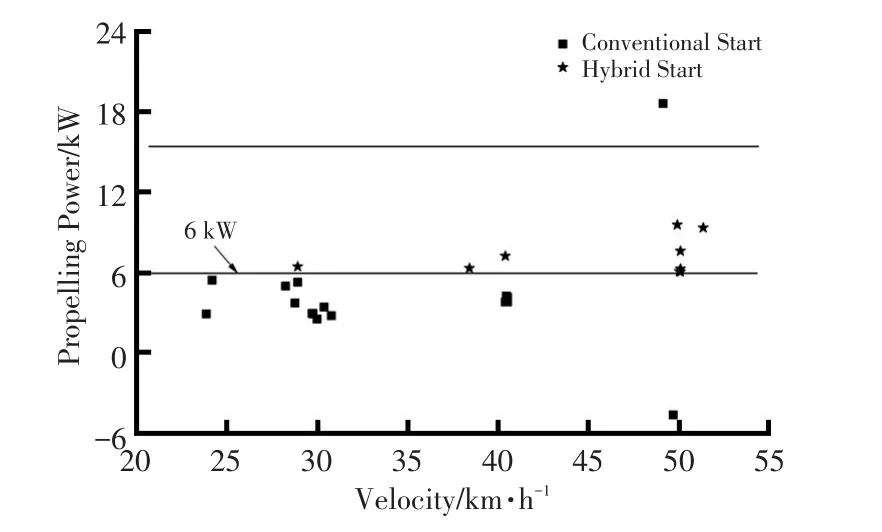
Figure 9.Relation between velocity and driving power with different engine start modes during constant-velocity driving
Besides the driving situations,ambient temperature is another factor influencing choice of engine start modes.When the temperature of low voltage battery is low,e.g.below 0℃,only hybrid start is available,which is caused by the drop of discharging ability for the low voltage battery.
In the following,we analyze the influence of driveability for the same driving situations with different engine start modes.
5.2.1 Constant-velocity driving with different engine start modes
As concluded in Table 6,conventional start and hybrid start both can be chosen as engine start mode for constant-velocity driving situations.Figure 10 and Figure 11 show engine start process during 50 km/h cruising,and from which we can learn that the jerk for criteria is 2.81 m/s3for conventional start and 2.5 m/s3for hybrid start,which means there is no distinguish for driveability with different engine start modes in cruising process.Choices of engine start modes in constant-velocity driving according to the driving power may have relation with other performance requirement such as economy.
For creeping situations,there is only hybrid start in normal conditions.In order to compare driveability with different engine start modes,we design conventional start during creeping through changing to Sport mode in electric creeping process.From the results shown in figure 12 and figure 13,we can obtain that the jerk for criteria is 1.74 m/s3for conventional start and 0.87 m/s3for hybrid start,which can explain why only hybrid start is available in creeping situations.
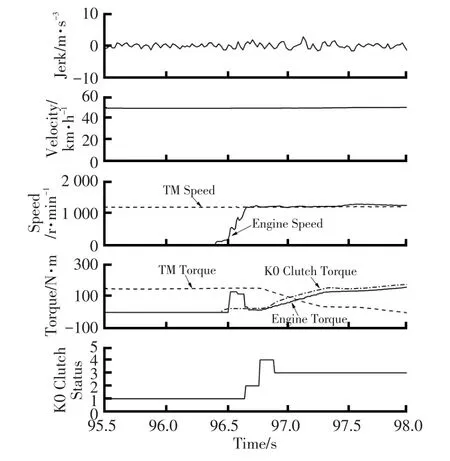
Figure 10.Conventional start during 50 km/h cruise
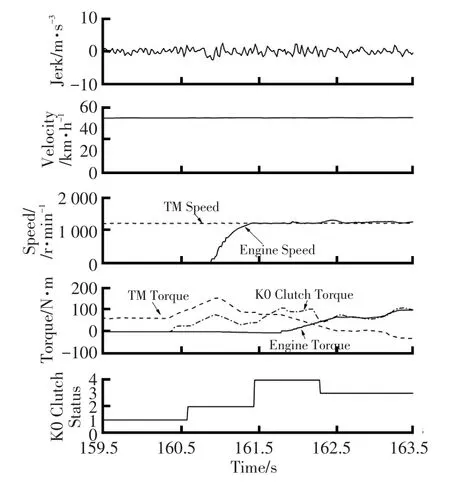
Figure 11.Hybrid start during 50 km/h cruise
5.2.2 Kick-down with different engine start modes
In normal conditions,conventional start is selected for kick-down situations.Only when the 12 V starter cannot work or the temperature of low voltage battery is too low,hybrid start will occur.In order to avoid unexpected influence caused by disabled 12 V starter,kick-down in low temperature is set for hybrid start.
Figure 14 and figure 15 show conventional start and hybrid start during constant- velocity kick- down respectively.QCais 0.9 for conventional start and 1.59 for hybrid start,which means response delay with hybrid start is much longer,so only conventional start can be applied during kick-down in consideration of perfect driveability.
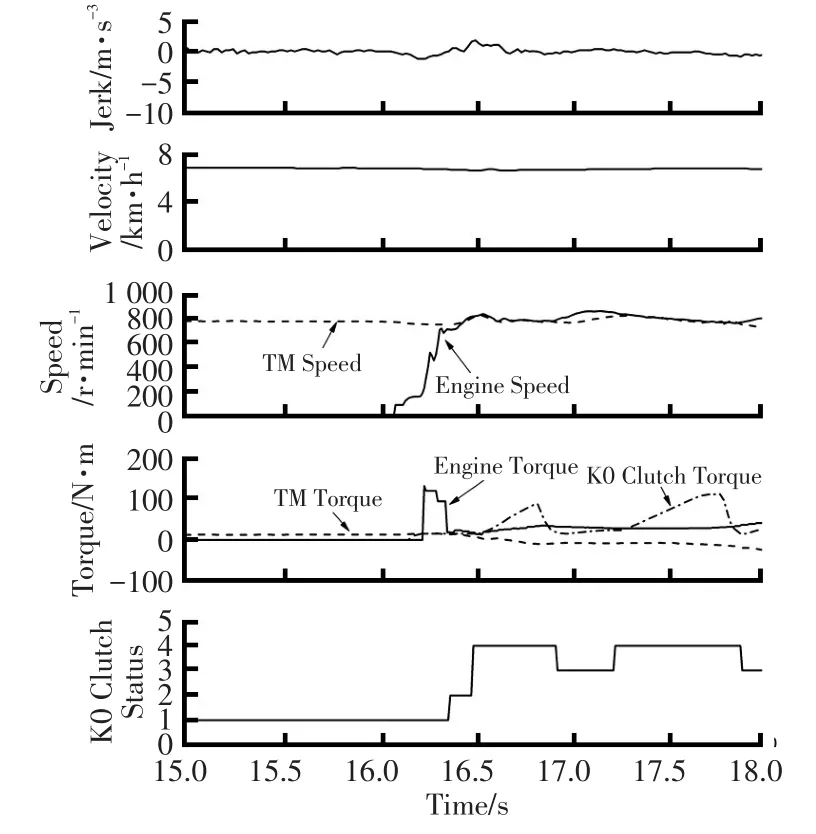
Figure 12.Conventional start during creeping
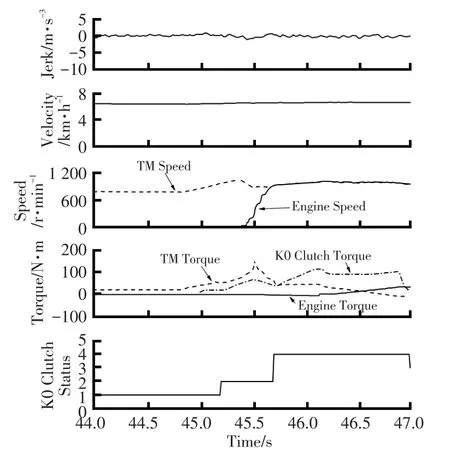
Figure 13.Hybrid start during creeping
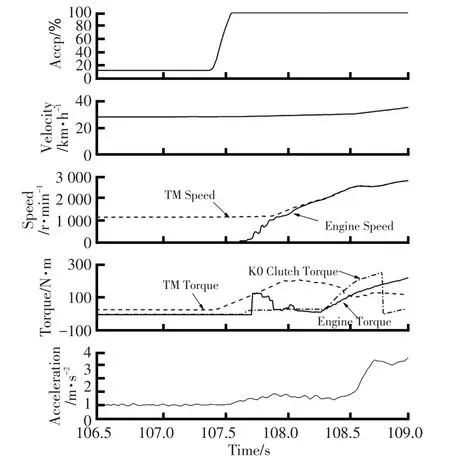
Figure 14.Conventional start during kick-down
On the basisofthe discussion above,Hybrid controller will choose the suitable engine start modes based on the conditions of vehicle and the driver’s demands.
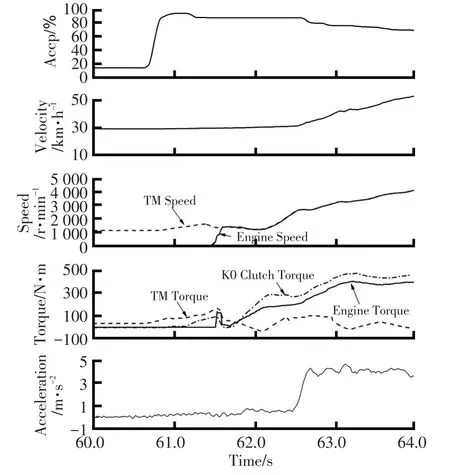
Figure 15.Hybrid start during kick-down
5.3 Transient Control
Start control sequences,torque compensation rules,and shift strategy can all have influence on vehicle’s driveability.
5.3.1 Conventional start control
Figure 16 shows a typical engine start process during kick-down.For kick-down situations,diminishing the response delay between the accelerator and acceleration is the main purpose.TM torque reaches the maximum ability before the engine can output power,which can help to compensate the required driving power as much as possible.At the same time,current gear is decreased from gear 4 to gear 2 for increasing acceleration ability with higher transmission ratio.In addition,K0 clutch will close completely until speed difference between traction motor and engine is almost 0,which can avoid vibrations caused by speed fluctuation.
5.3.2 Hybrid start control
Figure 17 and figure 18 show engine start during 30 km/h cruising and cold start respectively,which are both accomplished through hybrid start.For a hybrid start,slippingofK0 clutch and draggingenginethrough resonance zone quickly with more dragging power are methods to eliminate the torsional vibrations caused by resonance oscillations.In normal situations,engine is often fired after K0 clutch closed completely,which can decrease the jerks caused by torque fluctuations by increasing the rotational inertia of the starting system.
6 Conclusions
Compared with the conventional vehicles,frequent engine starts affect the driveability for hybrid electric vehicles.How to improve the driveability during engine start process is still a big problem for the vehicle OEMs all over the word.Through this study,we can learn that Audi A6 Hybrid gains perfect driveability during engine start process,and some conclusions about how to improve vehicle’s driveability are obtained as follows:
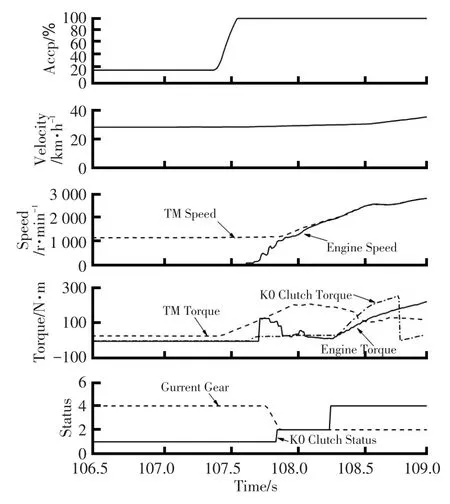
Figure 16.Engine start during kick-down
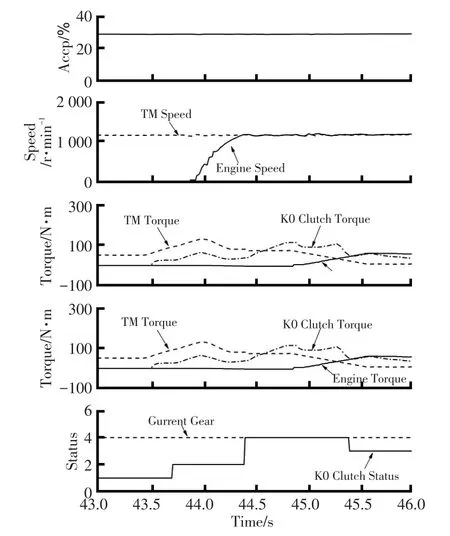
Figure 17.Engine start during 30km/h cruising
a. When the vehicle is in sustained creep situations,SOC interval of creep-charging is enlarged gradually to avoid frequent engine start;
b. Starting the engine immediately after Sport mode is selected,fulfils potential demands of acceleration;
c. When the vehicle is standstill or running at a constant velocity,hybrid start is selected for quiet and comfortable start;
d. When the vehicle is accelerating,conventional start is selected for the fulfilment of driver’s demand;
e. For conventional start,down-shifting gear or increasing TM torque can compensate the driver’s request torque,which can help to diminish the response delay as much as possible;
f. For Hybrid start,slipping of K0 clutch and firing after K0 closed are both methods to diminish vibrations.
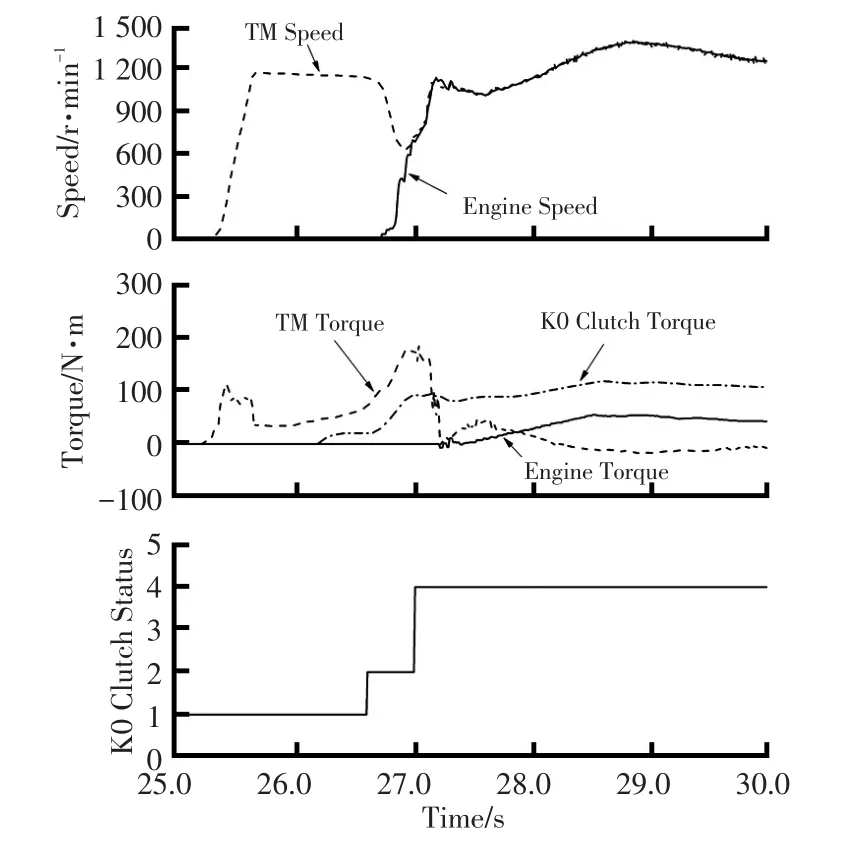
Figure 18.Cold start
1 Wu G,Zhang X,Dong Z.Optimal Control for Ensured Driveability ofParallelHEVs/PHEVs during Mode Transition.SAE Technical Paper 2014-01-1895.
2 Zhang J,Lu X,Wang L,et al.A Study on the Driveability of Hybrid Electric Vehicle.SAE Technical Paper 2008-01-1572.
3 Albert A,Matros K,Behrendt M,et al.Maneuver-Based Analysis of Starting-Systems and Starting-Strategies for the InternalCombustion Engine in FullHybrid Electric Vehicles. SAE International Journal of Alternative Powertrains,2014,4(1):58~66.
4 Colvin D,Masterson B.Challenges of Engine Starts and Driveability in a Parallel Hybrid-Electric System.SAE Technical Paper 2004-91-1572.
5 Kim S,Park J,Hong J,et al.Transient Control Strategy of Hybrid Electric Vehicle during ModeChange.SAE Technical Paper 2009-01-0228.
6 Kubalczy R,Gall R,Zhong L.Instant Analysis on Automatic Transmission Planetary Gear System.Drive System Technique,2013,27(3):3~12.
7 Zhao Z,Zheng Y,Zhou Y,et al.Engine Start Function Development of P2 Hybrid Vehicle.2016 SAE-China Congressamp;Exhibition,Shanghai,2016.
8 Fesefeldt T,Muller S.Optimization and Comparison of Quick and Hybrid Start.SAE Technical Paper 2009-01-1340.
9 Wang Q,Ji E,Wang W.Coordinated Control for Mode-Switch of Parallel Hybrid Electric Vehicle.Journal of Jilin University(Engineering and Technology Edition),2008,38(1):1~6.
10 Walters T L,Shaw P,Kumar M M,et al.Analysis Lead Drivability Assessment.SAE Technical Paper 2015-01-2804.
11 Govindswamy K,Wellmann T,Eisele G.Aspects of NVH Integration in Hybrid Vehicles.SAE Technical Paper 2009-01-2085.
12 Ng H K,Anderson J A,Duoba M J,et al.Engine Start Characteristics of Two Hybrid Electric Vehicles(HEVs)-Honda Insight and Toyota Prius.SAE Technical Paper 2001-01-2492.
(Editor Hu Pan)
Writingmark:A ArticleID:1000-3703(2017)09-0026-08
date:2017-07-28.

